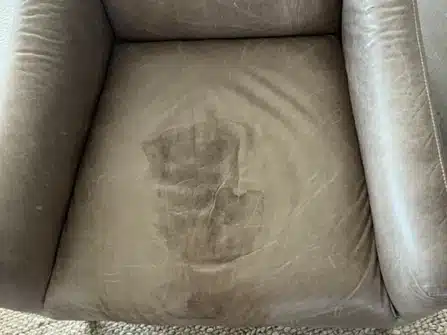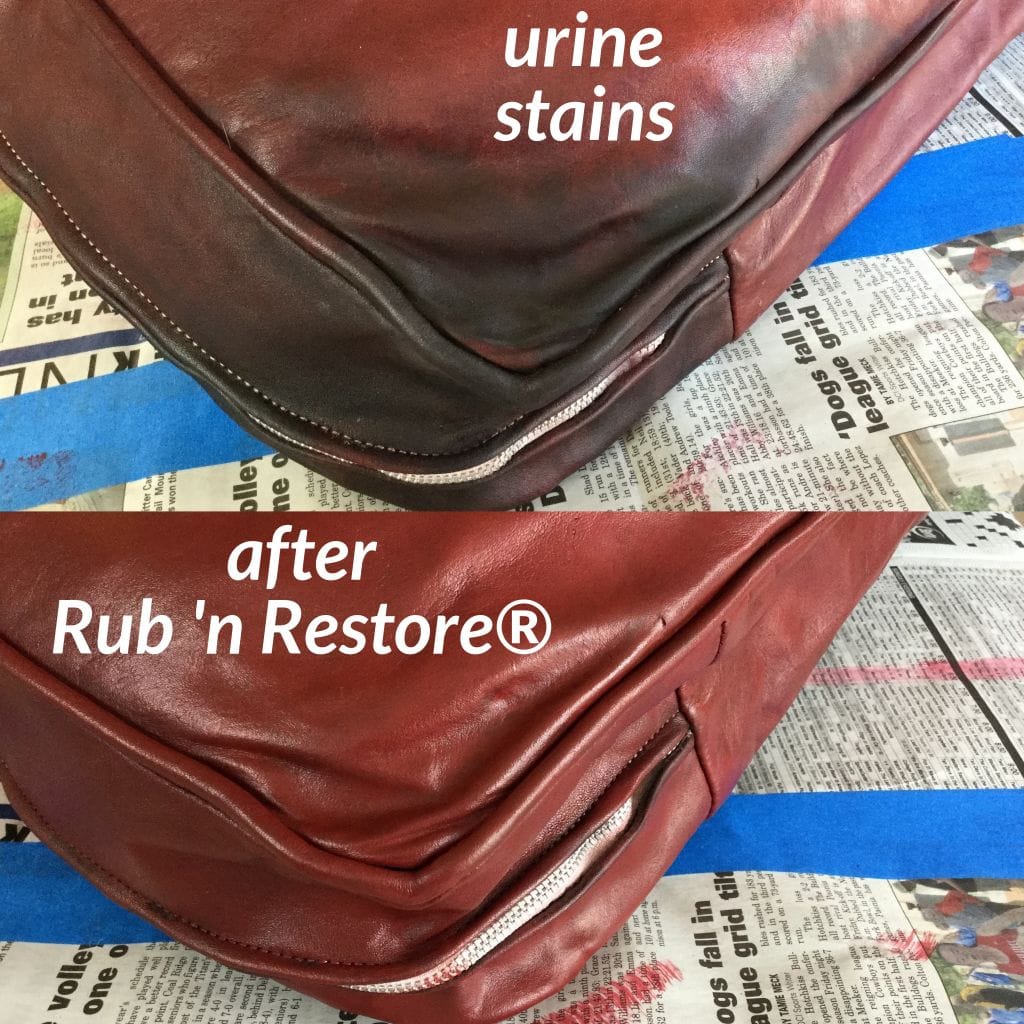The biggest problem posed by milk, urine, vomit, and pet stains on leather upholstery is the lingering odor caused by bacteria. Kill the bacteria, neutralize the odor, and the leather can usually be restored.


First, carefully flush the area with water, using a rag or toothbrush to gently scrub. This dilutes the source of the problem and allows additional steps to be more effective.
For milk and pet stains, try an enzyme cleaner like Anti-Icky Poo®. Bear in mind you may have to treat the front and backside of the leather as well as internal stuffing.
We have had some success with solution of 10% percent bleach in water on urine stains. It will kill the bacteria, but beware, it can also damage the pH of the leather (just as acidic bodily fluids can), causing it to degrade more quickly than it would otherwise. So you want to test in a small, inconspicuous area. Let sit for 5-10 minutes, then flush with water.
If these methods don’t cut it, your best bet is a sealed ozone chamber, which will deprive the bacteria of oxygen. Fire and flood restoration companies often have ozone chambers for eliminating mold and mildew.
For blood, try a little hydrogen peroxide. Opt for the common 3% stabilized antiseptic solution found at the pharmacy or supermarket. Apply with a q-tip or toothbrush and gently scrub. Let sit for 5-10 minutes, and rinse with water. As with bleach, the longer it sits on the leather, the greater potential for pH damage.
Stains and discoloration probably won’t be removed, but once the odor has been eliminated, any remaining eyesore can be corrected with Rub ‘n Restore® Colors. However, if the leather was etched (such that it feels stiffer and harder), a silhouette of the damage will remain and the only fix is reupholstery of that panel.
